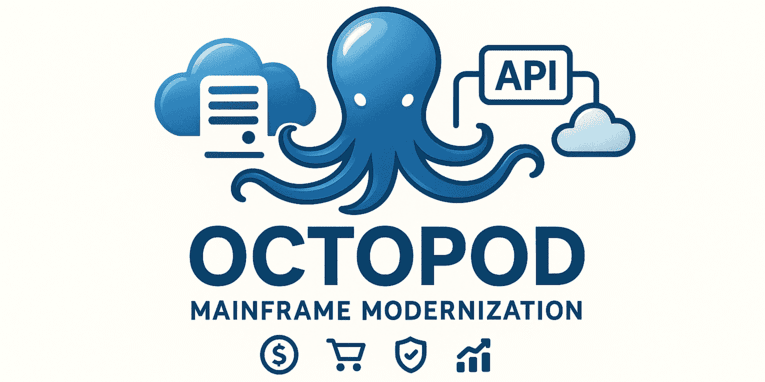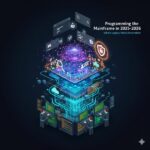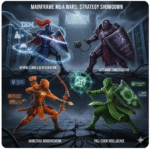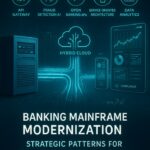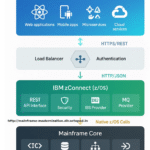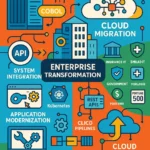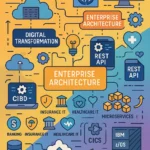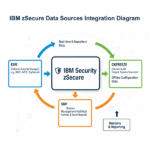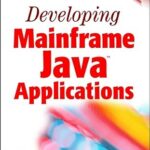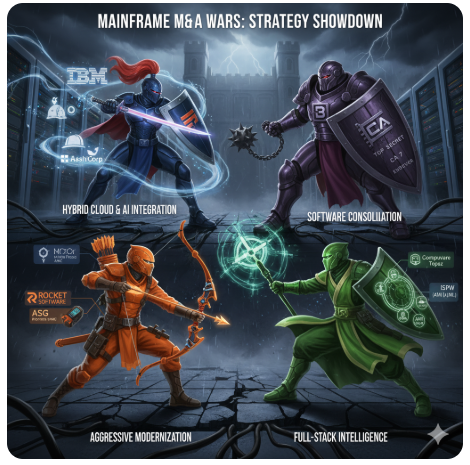Introduction
Look, I’ll be honest—when I first got into mainframes, I thought they were dinosaurs. Turns out, they’re more like phoenixes. They’ve been rising from the ashes for years now, and in 2025-2026, things are actually getting wild.
The whole “mainframes are for old people” thing? That’s changing fast. We’re getting a flood of younger devs coming in with fresh ideas, better tools, and the openness to actually learn the platform instead of just complaining about the green screen. And I get it—the tools have actually gotten good. Really good.
Here’s the thing: mainframes aren’t going anywhere. They’re running the financial systems you use every day, processing healthcare records, managing retail transactions, handling government operations. The difference now? They’re not isolated islands anymore. They’re part of the bigger picture—cloud, AI, open source, all of it. And that’s making them way more interesting to work on.
What’s a Mainframe Engineer Actually?
So we call them “mainframers,” and honestly, the job description has blown up over the last few years.
Used to be, mainframers were system programmers or operations folks who knew COBOL and some Assembler. Done. Now? You’re looking at people who need to understand hybrid cloud architecture, DevOps practices, API design, cloud integration—the whole stack. It’s not just about keeping the lights on anymore; it’s about making the mainframe actually talk to the rest of your infrastructure.
The best mainframers I know today can code in COBOL, spin up containerized microservices, architect API strategies, and explain to cloud teams why you can’t just “lift and shift” a 30-year-old financial system. They’re bridge-builders. They make the old work with the new, and honestly? That skill is worth a lot of money right now.
The Languages: Old School Meets New School
COBOL is still king. And I’m not being sarcastic. There’s more COBOL running in production right now than most people realize—billions of lines of code, still doing the heavy lifting every single day. The difference is we’re not writing as much new COBOL as we used to. We’re maintaining it, modernizing it, understanding it better.
Assembler? It’s not going anywhere either. If you want absolute control and maximum performance, Assembler is how you do it. Not everyone needs to know it deeply, but when you do, you really, really do.
PL/I has its niche. It’s still out there, still used in specific scenarios, but let’s be real—it’s not where the action is anymore.
Here’s what’s actually exciting: modern languages on the mainframe are no longer an afterthought. C, C++, Java, Python, Node.js—these aren’t weird experiments anymore. They’re legitimate tools for building new applications and integrations. Want to build an API layer that connects your mainframe to the cloud? Python or Java. Need a microservice that talks to z/OS? Node.js. It’s actually practical now.
And then there’s the AI stuff. This is where it gets crazy. Tools like IBM’s watsonx Code Assistant for Z and BMC’s AMI Assistant can literally help you understand COBOL code, refactor it, generate documentation, spot bugs—all automatically. I’ve watched these tools in action, and they’re genuinely impressive. They’re not perfect, but they’re making developers way more productive and making it way easier for new people to jump into legacy codebases without losing their minds.
The Development Environment: We Finally Left the Green Screen
For decades, if you wanted to work on mainframes, you had to learn TSO, SDSF, ISPF—all these character-based interfaces on green screens. And yeah, they’re powerful and efficient if you know what you’re doing, but they’re also incredibly intimidating if you’re coming from modern development environments. I remember my first day. I felt like I’d time-traveled.
Here’s the good news: you don’t have to start there anymore.
VS Code is now the standard IDE for mainframe development. And I mean standard—not some weird workaround, but the actual recommended path for most new developers. The extension ecosystem is massive. IBM has extensions. Broadcom has them. There are community-built ones. It feels natural if you’ve worked with distributed systems or cloud platforms.
But it gets better. Open-source tools are actually changing how we work. Zowe is this amazing open-source framework for z/OS that basically lets you interact with the mainframe in modern ways. Broadcom’s backing it with free support. Galasa lets you automate testing on mainframes—which used to be a nightmare. And Open Telemetry integration means your mainframe logs and metrics aren’t locked into some proprietary system anymore; they’re part of your enterprise observability stack.
Honestly? The development environment in 2025-2026 is the best it’s ever been. You can use the tools you already know, follow familiar workflows, and still access all the mainframe power you need.
AI Is Changing Everything (And It’s Happening Fast)
I’m not going to oversell AI, but I’m also not going to pretend it’s not completely transforming how we work with mainframes right now.

Generative AI models trained on COBOL, JCL, and other mainframe languages can do things that seemed impossible a couple years ago. Need to understand what a 20,000-line COBOL program does? An AI tool can analyze it and explain it. Want to refactor legacy code to cloud-native architectures? AI can help with the patterns and migrations. Trying to move workloads off the mainframe to distributed systems? There are AI tools specifically built for that now.
The real game-changer is something called AIOps—AI for operations. Instead of waiting for systems to break and then frantically trying to fix them, AI is detecting problems before they happen. It’s automating routine maintenance tasks. It’s spotting anomalies that would take a human hours to find. And it’s making mainframe operations way less of a firefighting exercise.
But the coolest part? IBM’s next-generation mainframe chips (the Telum II stuff) have AI acceleration built right into the hardware. Real-time fraud detection. Predictive analytics. Running AI workloads natively on the mainframe without any latency or external dependencies. That’s not theoretical; that’s happening in 2025-2026.
Open Source Finally Matters on the Mainframe
Here’s something that would’ve been wild to say five years ago: the mainframe community is actually embracing open source, and it’s a big deal.
For years, there was this wall between mainframe culture and open-source culture. They were completely different worlds. Now? That wall is crumbling. Zowe is mainstream. Galasa has a real community. Open Telemetry adoption is breaking down the mainframe’s isolation, integrating it into the same observability frameworks that cloud teams use.
What does this mean in practical terms? It means mainframe teams can work with the same tools, same practices, same philosophies as distributed systems teams. It means new developers don’t have to learn a completely different way of thinking about software engineering just to work on the mainframe. It means the barrier to entry is dramatically lower.
And yeah, it’s reducing costs and improving interoperability too. But the human part—the fact that it’s making mainframes a normal, modern place to work—that’s the real win.
New Hardware That Actually Makes You Excited
IBM’s rolling out next-generation mainframes in 2025-2026 with the Telum II processor, and honestly? It’s worth paying attention to.
We’re talking about embedded AI acceleration, better security, more scalability, improved energy efficiency. It’s not just incremental improvements; it’s a genuinely different approach to what a mainframe can do. These systems are positioning the mainframe as an active participant in AI-driven decision-making, not just a vault for legacy applications.
LinuxONE systems are evolving too. These have gone from interesting experiments to actually significant products for IBM. If you’ve got workloads that need Linux on mainframe infrastructure with that reliability and security, LinuxONE is becoming a real consideration.
The Skills Crisis Isn’t a Crisis Anymore
For years—and I mean years—the mainframe industry was in a panic about hiring. All the experienced people were retiring. Younger developers wanted to work with trendy cloud tech, not “boring old mainframes.” It felt like the entire field was slowly going to disappear.
Plot twist: it’s not happening.
Major companies are investing heavily in training. IBM’s Master the Mainframe program (now called IBM Z Xplore Learning Platform) is producing capable developers. Broadcom’s Mainframe Academy is doing serious work. But more importantly, the actual experience of working on mainframes has improved so much that it’s attractive to new people.
Modern tools mean you don’t need 20 years of experience to be productive. AI-assisted development means you can ramp up faster. Open-source frameworks mean you’re not learning completely proprietary tools that only work on mainframes. And the money? The money is genuinely good. Like, better than a lot of cloud positions, better than a lot of startup jobs. Competitive compensation with solid, stable work. That’s actually appealing to people.
By 2026, we’re looking at a healthier job market where companies are hiring, talented people are moving into the space, and it actually feels like a growing field instead of a dying one.
Startups Are Making Mainframes Interesting Again
There’s this whole ecosystem of startups that’ve gotten serious funding and are actually building innovative tools for the mainframe space.
PopUp’s making testing and deployment flexible and actually affordable. Mechanical Orchard is tackling modernization—helping teams transform legacy systems into cloud-native architectures. AveriSource is using AI and analytics to automate code discovery and migration, which used to be an absolutely painful manual process.
What’s cool about this is it’s attracting venture capital, smart engineers, and entrepreneurial energy to the mainframe space. These aren’t corporate initiatives backed by big vendors trying to protect their turf. These are new companies genuinely trying to solve problems and build better tools. And that energy is infectious. It’s making the mainframe feel like a place where things are happening, where innovation is possible.
Where We Are Now
The mainframe in 2025-2026 is genuinely different from what it was even a few years ago.
COBOL and Assembler still exist, still matter, but they’re not the whole story anymore. Modern languages, modern tools, and modern practices are now first-class citizens on the platform. The development environment isn’t hostile to people coming from cloud backgrounds. Open-source tools are real options, not weird fringe projects. AI is actively changing how we build and operate these systems.
Being a mainframer today means you’re not just maintaining legacy systems—though that’s part of it. You’re architecting hybrid solutions. You’re integrating old and new. You’re solving problems that cloud-only teams can’t solve and that traditional mainframers wouldn’t know how to approach.
The skills shortage isn’t a crisis anymore because the job is actually interesting, the tools are actually modern, and the career path is actually viable. We’re seeing younger developers choosing to work on mainframes not because they have to, but because they want to.
The mainframe isn’t going anywhere. It’s not a relic. It’s evolving, adapting, becoming more relevant and more interesting. And if you’re willing to dive in, it’s genuinely a fascinating place to build your career right now.
That’s where we are in 2025-2026. It’s a good time to be a mainframe developer.
